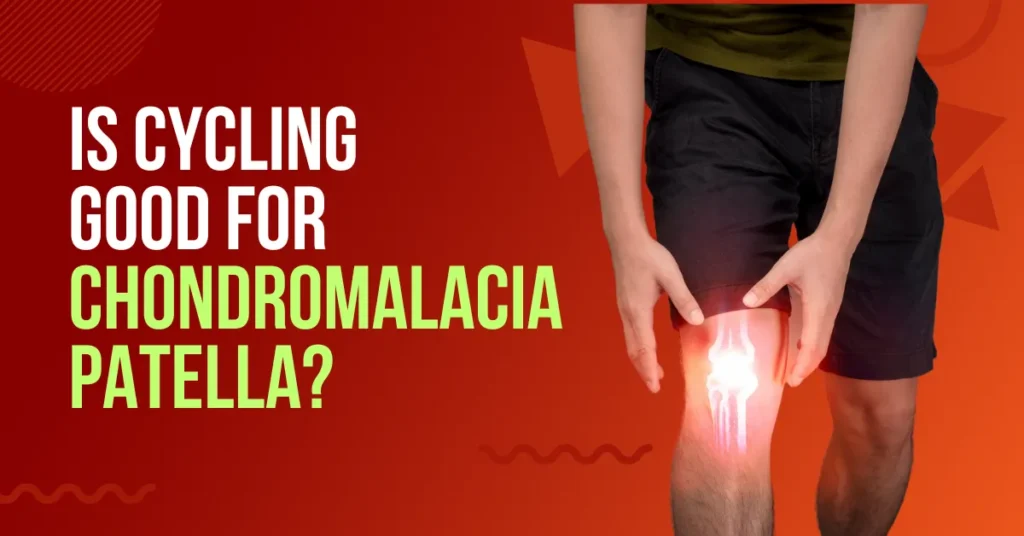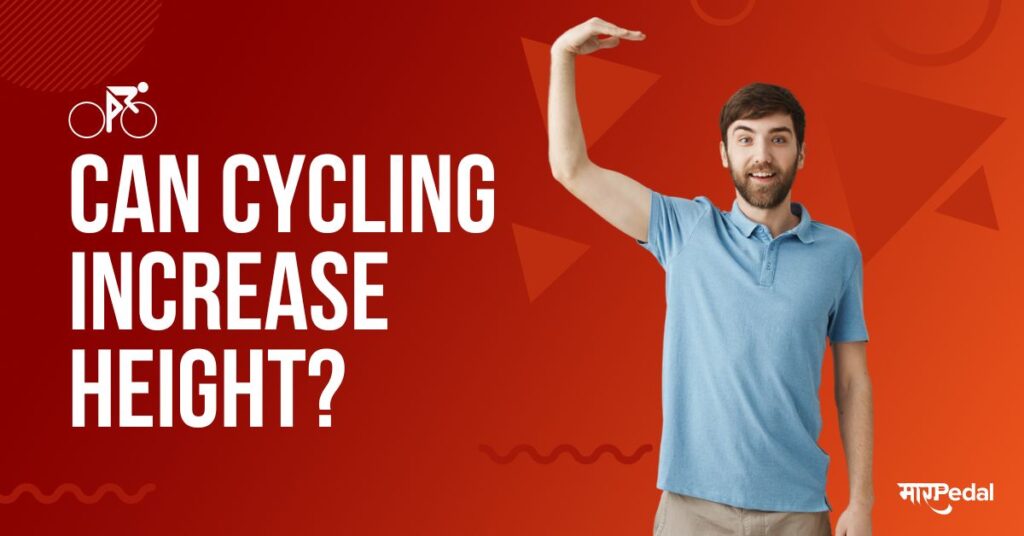
Chondromalacia patella, commonly known as “runner’s knee,” refers to the softening and breakdown of the cartilage on the underside of the kneecap (patella). It is a common cause of anterior knee pain in athletes and active individuals.
Some key facts about chondromalacia patella:
- It is caused by overuse, injury, or compression of the kneecap
- More prevalent in women than men
- Most common between the ages of 15-35 years old
- Pain is felt behind or around the kneecap, especially when climbing stairs or squatting
- Can range from mild to severe
- Diagnosis involves physical examination and sometimes MRI
- Treatment focuses on rest, physical therapy, NSAIDs, bracing, and sometimes surgery
Cycling is often recommended as an ideal low-impact exercise for those with chondromalacia patella. But is it truly beneficial? Let’s take a deeper look.
Benefits of Cycling for Chondromalacia Patella
Many experts do recommend cycling as an excellent activity for those with runner’s knee for the following reasons:
1. Low Impact on the Knees
Unlike high-impact exercises like running, cycling does not involve repetitive pounding on the kneecap. The circular pedaling motion is smooth and fluid, reducing direct pressure on the underside of the patella. This makes cycling much less likely to aggravate pain and inflammation.
2. Improves Range of Motion
The bending and extending motion of the knee joint during cycling enhances flexibility and range of motion. This helps counteract the stiffening that can occur with chondromalacia patella.
3. Strengthens Muscles Around the Knee
Cycling engages many of the major muscles like the quadriceps and hamstrings that stabilize and support the knee joint. Strengthening these muscles through cycling can help take pressure off the kneecap.
4. Aerobic Exercise With Low Impact
Cycling provides an excellent way to maintain cardiovascular fitness without high-impact activity. The aerobic benefits boost circulation and improve healing.
5. Easy to Modify Intensity
On a stationary or recumbent bike, it’s simple to adjust resistance levels to find just the right cycling intensity. This makes it easy to avoid overexertion that can aggravate knee pain.
6. Low Risk for Acute Injury
Unlike sports with pivoting motions like basketball, cycling has a lower risk of acute knee injury. There is no sudden stopping, cutting or landing.
7. Promotes Weight Loss
The aerobic workout from cycling burns calories and helps reduce weight. Losing excess body weight takes significant pressure off the knee joints.
8. Alternative to High-Impact Exercise
For runners, cyclists or others who need to avoid high-impact exercise temporarily, cycling offers an alternative way to remain active.
Potential Drawbacks of Cycling with Chondromalacia Patella

While cycling has many benefits, there are also some potential drawbacks to consider:
1. Overuse Can Worsen Pain
It’s possible to overdo cycling and cause further irritation. Starting gradually and avoiding overexertion is key.
2. Pedaling Might Initially Aggravate
Some people do experience knee pain when first starting cycling. Modifying intensity and using NSAIDs helps manage this.
3. Risk of Patellar Tendinitis
High resistance cycling for long durations could potentially lead to overuse tendinitis around the kneecap.
4. Proper Bike Fit Is Essential
An improperly fitted bike can create misalignment or too much pressure on the knees. Professional bike fitting helps.
5. Does Not Build Proprioception
Cycling lacks the multidirectional movements and balance components to build full knee proprioception like sports therapy.
6. Not a Weight-Bearing Exercise
As a non-weight bearing activity, cycling does not strengthen bones like impact exercises. Additional weight-bearing activity is beneficial.
7. Still Requires Caution
While low-impact, cyclists with knee issues should still take care to progress gradually and avoid riding through pain.
Factors that Influence If Cycling Is Beneficial
The exact effects cycling may have on chondromalacia patella can vary based on several key factors:
Severity of Knee Damage
Those with mild chondromalacia are more likely to tolerate cycling well than those with advanced damage. Severe cases may require extended rest before cycling.
Bike Fit and Settings
A proper bike fit, correct seat height, appropriate resistance levels and use of clipless pedals all impact the amount of knee stress while cycling.
Type of Bike/Pedals
Upright bikes or recumbent bikes distribute pressure differently than standard road bikes. Clipless pedals also reduce impact on the kneecap compared to platform pedals.
Cycling Frequency/Duration
Frequent, long rides or intense intervals are more likely to aggravate knees than shorter casual rides done a few days a week. Building up duration gradually is best.
Use of Proper Technique
Maintaining good form by pedaling in smooth circles with proper leg extension protects the knees. Pedaling with high resistance in a ”mashing” style can exacerbate pain.
Additional Knee Support
Using a knee sleeve, brace, or taping provides extra stabilization and may allow longer cycling sessions.
Presence of Other Knee Issues
Underlying issues like ACL tears, arthritis, tendinitis or bursitis may be aggravated by cycling and require evaluation first.
Response to Medications/Injections
Some find cycling more comfortable after using NSAIDs, cortisone or hyaluronic acid injections to treat inflammation and pain.
Tips for Cycling Safely with Chondromalacia Patella

If you want to cycle to aid recovery from runner’s knee, consider these tips:
- Get a proper bike fitting from a professional
- Use a stationary or recumbent bike initially
- Start with shorter rides (10-15 minutes) and increase gradually
- Pedal at a smooth, easy cadence around 60-80 RPM
- Avoid mashing big gears or pedaling forcefully
- Adjust seat height so there is a slight bend at the knee at the bottom of the pedal stroke
- Consider clipless pedals to distribute pressure evenly
- Warm up and stretch the quadriceps, hamstrings, calves well
- Ice knees after cycling to control inflammation
- Use over-the-counter NSAIDs if cycling causes pain/swelling
- Wear a compression knee sleeve or knee brace
- Consider physical therapy to complement cycling
- Avoid riding through severe knee pain
- Take days off when needed for rest and recovery
- Cross-train with non-weight bearing exercises like swimming
Cycling can be a knee-friendly exercise option for chondromalacia patella recovery. Paying attention to intensity, gradually building duration, optimizing bike fit and using proper technique allows you to gain the benefits while avoiding potential aggravation to the kneecap area. Always consult your physician or physical therapist to determine if cycling is appropriate for your individual knee condition.
Conclusion
For individuals dealing with painful chondromalacia patella, cycling can provide an excellent low-impact exercise option to stay active while allowing the knees to recover. The smooth, circular pedaling motion limits pressure through the kneecap compared to higher impact activities like running.
However, caution must still be taken to progress cycling duration and intensity gradually. Proper bike fit, use of correct form and supportive gear like knee braces can further protect the knees. Combining cycling with other treatments like knee strengthening, icing, medication, and physical therapy provides comprehensive recovery.
Discuss with your doctor or physical therapist to determine if cycling is right for your specific chondromalacia patella situation. While not a cure-all, cycling can be an effective part of an overall treatment plan to manage runner’s knee when done properly. With some care and patience, it is possible to pedal your way to less knee pain over time.
FAQs About Cycling for Chondromalacia Patella
Here are answers to some common questions about using cycling to manage runner’s knee pain:
Is it safe to cycle if I have a chondromalacia patella?
For most people, cycling is a safe exercise choice with chondromalacia patella, especially when done carefully and progressed gradually. The low-impact circular pedaling motion avoids excessive pressure through the kneecap. Consult your doctor first before starting any new activity.
Should I use a stationary bike or a road bike?
A stationary bike is often best initially since it allows you to control resistance, maintain proper form and avoid impact from terrain. Upright or recumbent stationary bikes distribute pressure differently across the kneecap. Once acclimated, road bikes are fine for many with chondromalacia patella if fitted properly.
How often should I cycle with the chondromalacia patella?
Aim for cycling every other day at first, for short 10-20 minute sessions at an easy intensity. Allow rest days for the knees to recover. Slowly increase the duration to 30-45+ minutes as able. Avoid cycling daily or with intensity until the knees have adapted.
Will cycling help heal my chondromalacia patella?
Cycling strengthens the knee muscles and improves flexibility – both of which aid recovery. But cycling alone is not enough to fully heal the chondromalacia patella. Additional stretching, knee stabilization exercises, icing, and potentially medications, injections, or physical therapy are often needed.
Does cycling ever make chondromalacia patella worse?
In some cases, yes. Cycling at high resistance without proper form, or pushing beyond pain tolerance can aggravate the kneecap area. Build up duration/intensity very gradually. If cycling significantly worsens pain, take a break and see your doctor to evaluate if modifications or more rest are needed.
Should I continue cycling if my knee is hurting?
Never cycle through significant knee pain with chondromalacia patella. Mild discomfort may be normal at first but should subside. Reduce resistance or take days off if knee pain continues. Persistent pain likely means modifications in form, bike fit or additional rest/treatment is required. Consult your physician if concerned.






